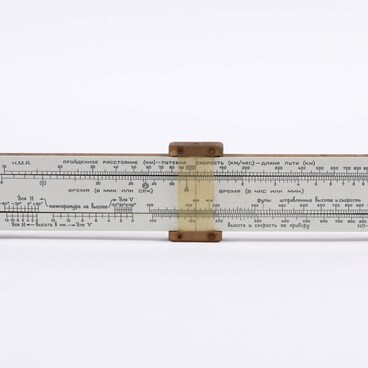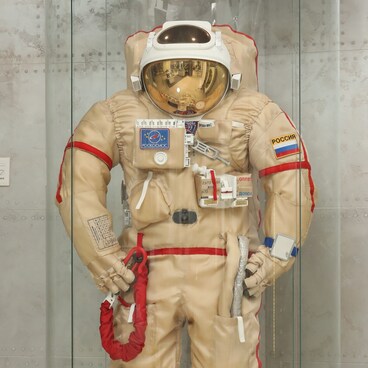This automatic pen is designed for writing in zero gravity and was used on board the Salyut-6 space station in the 1980s. Inside the pen there is an ink holder, and its two parts screw together. Around the pen is written Salyut–Soyuz. In 1990 the pen was personally given to the K.E. Tsiolkovsky Museum of Aviation and Cosmonautics by Victor Petrovich Savinikh, Soviet pilot and cosmonaut, twice Hero of the Soviet Union, and Honored Citizen of Kirov and Kirov region, and since then it has been part of the museum’s collection.
Space pen
Время создания
Before 1981
Размер
13,5x1x1 cm
13.5 х 1 х 1
13.5 х 1 х 1
Техника
Machine made items
Коллекция
Выставка
3
Открыть в приложении#1
Soyuz–Salyut automatic pen for use in space
#3
#4
The cosmonaut used this pen to make notes and record the results of his experiments. In its design the pen is rather different from those used on the ground. In conditions of weightlessness pens of the type that we use every day cannot write, as they depend on the force of gravity to push the ink onto the ball that forms the tip of the pen.
#5
In this space pen the ink is stored in a special cartridge, under a fixed pressure. The “ink” is actually a thixotropic gel, the viscosity of which decreases when the ball is rotating. The gel becomes liquid and can be used to write on any surface. As soon as the ball stops moving around the gel thickens and stops flowing. Compressed nitrogen in the ink cartridge keeps the ink at a constant pressure of 2.4 atmospheres. A sliding barrier keeps the ink and liquid nitrogen separate.
#6
For writing in space, American astronauts used to use felt-tipped pens and mechanical pencils, and Soviet cosmonauts used wax crayons, since the graphite in ordinary pencils could break — resulting in small pieces of graphite, which could be inhaled by accident, or graphite dust, which conducts electricity and can causes short circuits.
#8
The pen was developed by Fisher Spacepen Co., under the supervision of the inventor Paul Fisher. The company developed the pen itself without any state funding, and once the pen was ready to use it was adopted by the US and Soviet space agencies. At that time these pens cost an average of 6 dollars each.
#9
Ministry of Culture of the Russian Federation
читать дальшескрыть
00:00
00:00
1x
Space pen
Время создания
Before 1981
Размер
13,5x1x1 cm
13.5 х 1 х 1
13.5 х 1 х 1
Техника
Machine made items
Коллекция
Выставка
3
Открыть в приложении
Поделиться



